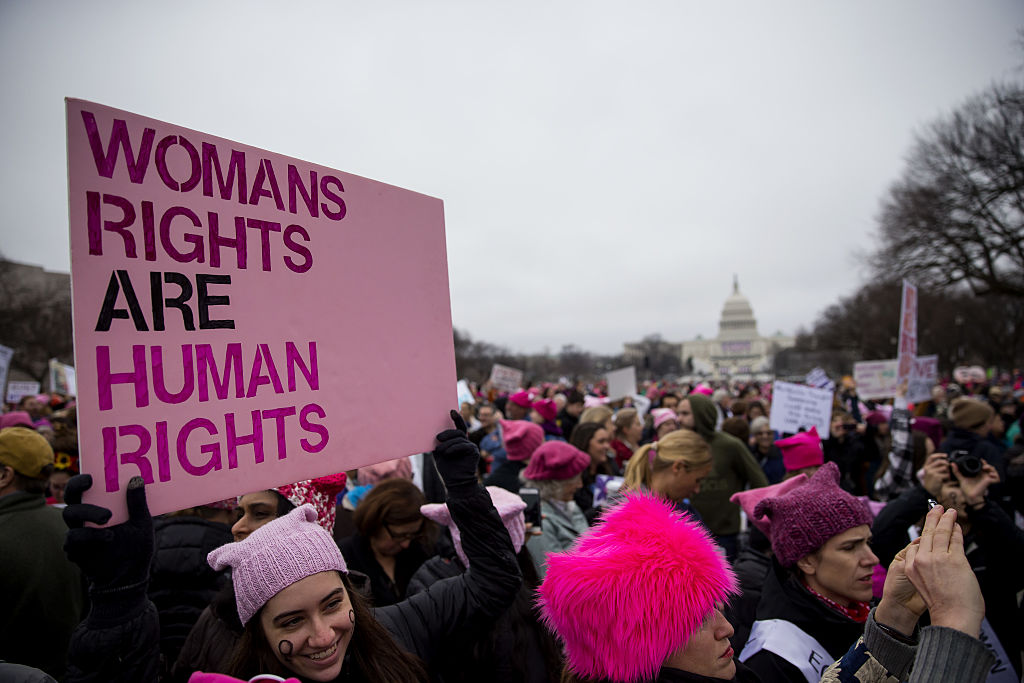
The U.S. and other countries, including the U.K. and Australia, are celebrating Women’s History Month in March, featuring International Women’s Day on March 8.
This year, President Joe Biden said in his proclamation declaring Women’s History Month that during this time, “we celebrate the courageous women who have helped our Nation build a fairer, more just society.”
Here are 10 surprising facts about Women’s History Month.
International Women’s Day was first recognized in Europe
Many reports trace the origins of a holiday honoring women to New York City in 1909, to the commemoration of a garment workers’ strike.
In 1910, German activist Clara Zetkin suggested to the International Conference of Working Women in Copenhagen the creation of an international holiday to honor women. Europeans recognized International Women’s Day in 1911, although the U.S. did not follow suit.
International Women’s Day’s date was chosen because of the Russian revolution
The date of March 8 became significant in 1917, when women in the Russian capital of Petrograd protested and went on strike, demanding food and the end of the empire. A week later, the Tsar abdicated. Zetkin reportedly suggested in 1921 that March 8 become International Women’s Day as a result.
Women’s History Month started as a local week
Women’s History Month began as a local week-long celebration in Santa Rosa, California in 1978, according to the online National Women’s History Museum. The Education Task Force of the Sonoma County Commission on the Status of Women planned the week and timed it with International Women’s Day.
Local advocates then formed the National Women’s History Project, now the National Women’s History Alliance, to share women’s achievements. One of the group’s members, Molly Murphy MacGregor, participated in The Women’s History Institute at Sarah Lawrence College in New York, where others were inspired to start their own week celebrations, according to the group’s website. By 1986, 14 states had already declared March as Women’s History Month.
It took years for Women’s History Month to be federally recognized
In 1980, the National Women’s History Project led a coalition of women’s groups successfully lobbied President Jimmy Carter to issue a proclamation recognizing National Women’s History Week, National Geographic reported. It took until 1987 for Congress to pass a law designating March as Women’s History Month.
The U.S. president designates Women’s History Month every year
Between 1988 and 1994, Congress passed resolutions requesting and authorizing the president to proclaim the special month. Since 1995, each president has issued an annual proclamation designating Women’s History Month.
Former President Barack Obama’s 2011 proclamation paid homage to the 100th anniversary of International Women’s Day, saying the holiday “is a chance to pay tribute to ordinary women throughout the world and is rooted in women's centuries-old struggle to participate in society on an equal footing with men. This day reminds us that, while enormous progress has been made, there is still work to be done before women achieve true parity.”
There is an annual theme for Women’s History Month
The National Women’s History Alliance sets a theme for the month every year. This year’s theme is “Women Who Advocate for Equity, Diversity and Inclusion.”
“The theme recognizes women throughout the country who understand that, for a positive future, we need to eliminate bias and discrimination entirely from our lives and institutions,” a statement from the alliance on its choice read.
Women’s History Month is celebrated differently in Canada
Women’s History Month has spread around the world, from the Philippines to the U.K. In the latter, Mother’s Day is also celebrated in March. While Women’s History Month is generally commemorated in March, Canada holds their celebrations in October.
International Women’s Day is an official holiday in some countries
Some countries mark International Women’s Day as an official holiday, Sky History reported. In China, many women can take a half-day holiday. In Serbia and Albania, International Women’s Day is also Mother’s Day.
International Women’s Day is celebrated with certain colors
Purple, green, and white are the colors of International Women's Day, according to the International Women’s Day website. The colors reportedly originated from suffragists in the Women's Social and Political Union (WSPU) in the U.K. in the early 1900s and were transported to the U.S.
Actions this year will focus on abortion rights
The Women’s March organization, which ran its first prominent march in 2017 a day after Donald Trump’s inauguration, is planning a rally in Washington D.C. on March 26, when the Supreme Court will begin hearing oral arguments in a case about the abortion pill.
The Supreme Court issued a temporary order in 2023 that put on hold a Texas federal judge’s order to suspend the federal government’s approval of the abortion pill. The March hearing will be the first major case concerning abortion since the Supreme Court’s Dobbs v. Jackson Women’s Health Organization ruling overturned Roe v. Wade in 2022.
More Must-Reads from TIME
- Cybersecurity Experts Are Sounding the Alarm on DOGE
- Meet the 2025 Women of the Year
- The Harsh Truth About Disability Inclusion
- Why Do More Young Adults Have Cancer?
- Colman Domingo Leads With Radical Love
- How to Get Better at Doing Things Alone
- Michelle Zauner Stares Down the Darkness
Contact us at letters@time.com